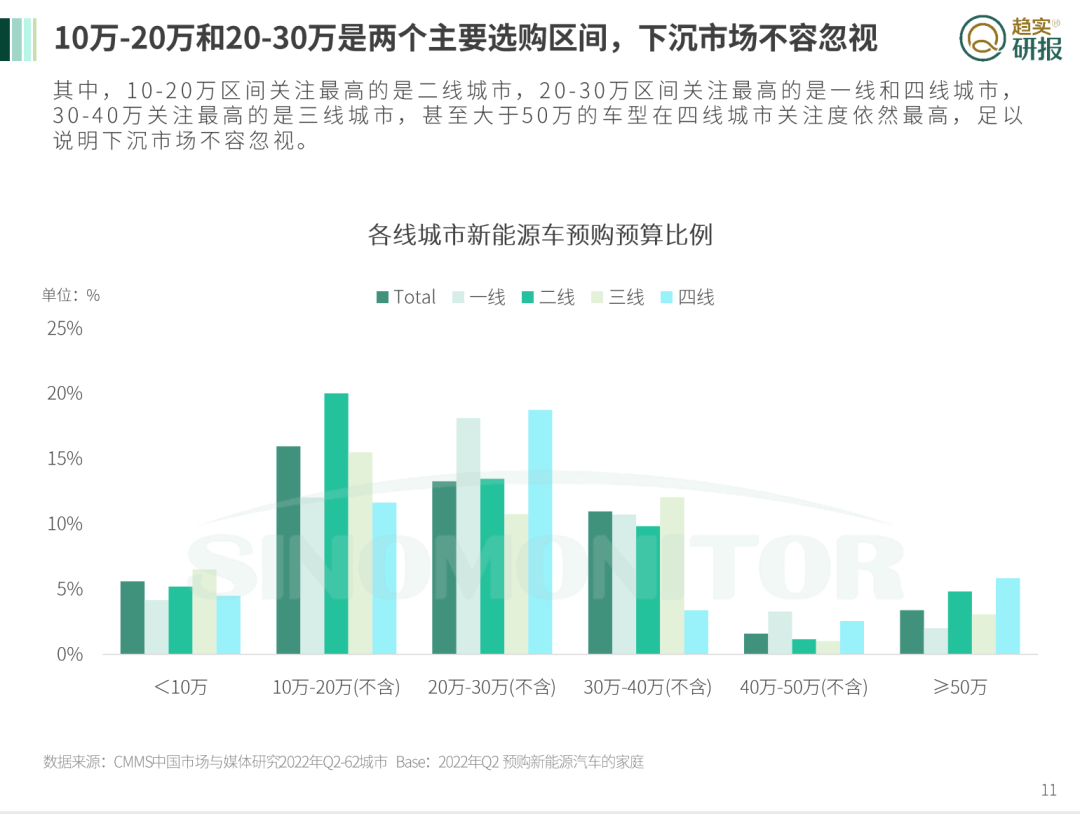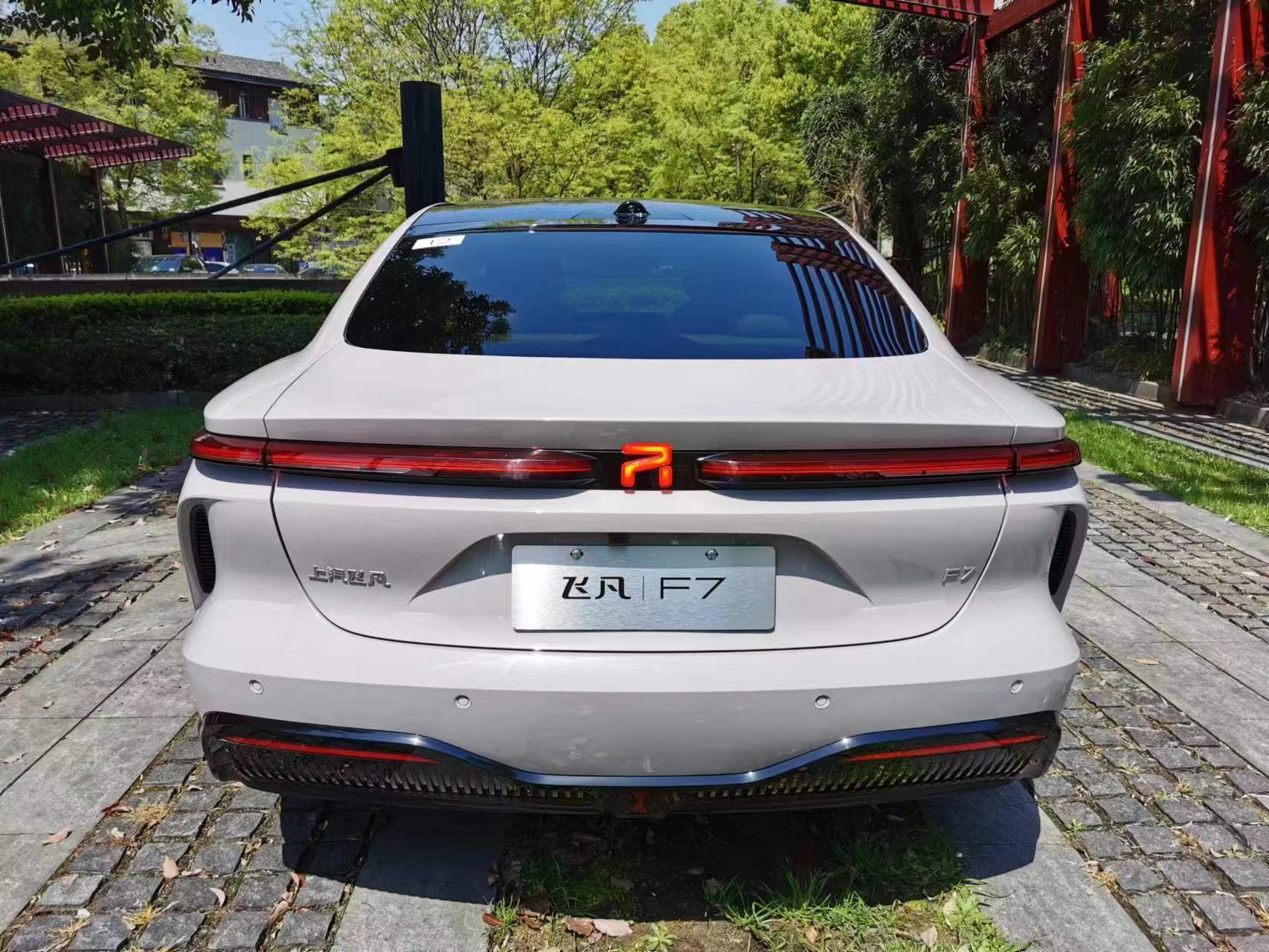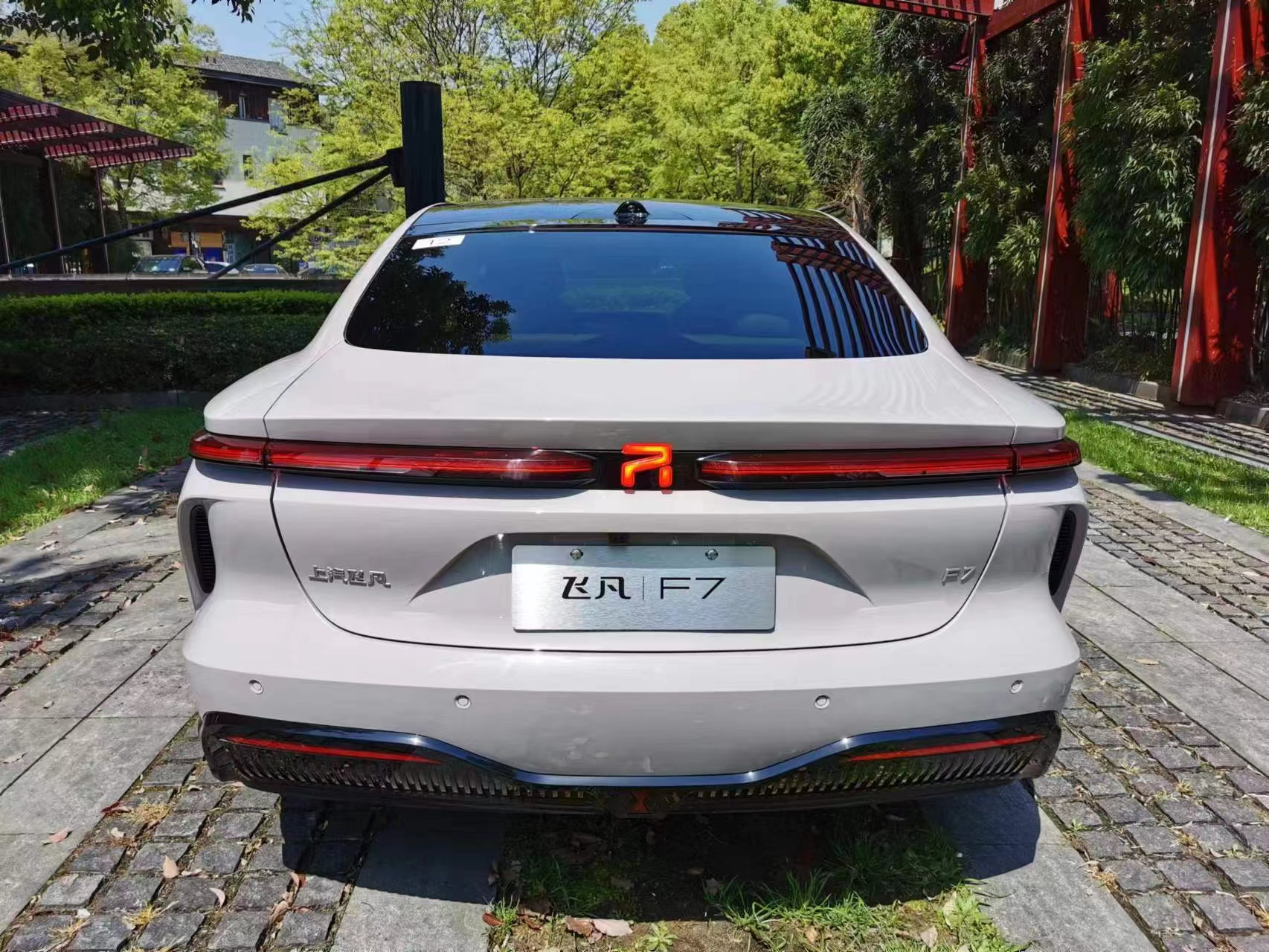Article by Zheng Wen
Edited by Zhou Changxian
On the evening of March 27th, arriving half an hour late, Feifan Automotive CEO Wu Bing hurried into the interview room, taking a seat while explaining to the media that the server had exploded, and he had been dealing with the problem.
“We feel both delighted and under tremendous pressure. With so many users’ expectations and our dealership partners, we have no choice but to let more users see this car.”
For any automaker, this is indeed a sweet dilemma.
The Feifan F7, launched that night, is a standard C-class car, with six models available: the 77kWh Advanced version is priced at ¥229,900, and the 77kWh Advanced Pro version at ¥249,900; the 90kWh Long Range version at ¥249,900, and the 90kWh Long Range Pro version at ¥269,900; the 90kWh Performance Pro version at ¥301,900.
In addition, the Feifan F7 will also offer a 64kWh lithium iron phosphate base version, priced at ¥209,900, to be launched in the second half of this year. If choosing the vehicle battery separation mode for purchase, the threshold for buying the Feifan F7 will be further lowered to ¥145,900.
With a price reduction of about ¥50,000 to ¥80,000 compared to the announced pre-sale price, Feifan F7’s server broke as soon as its pricing came out. Some people jokingly said that the Feifan F7’s pricing strategy was somewhat reminiscent of Luo Yonghao, seeming to not be after anything but making friends.
Introducing only one concept
The launch of the Feifan F7 took a unique approach, abandoning comprehensive feature introductions and focusing on just one thing – how to design the car interior based on consumer insights.
The cabin is named the “Bach Cabin,” with the selling point that “every seat is the best seat.” The combination of a 43-inch wide full-color triple screen in the front and an 8-inch entertainment and movie screen in the rear creates a two-way, two-zone independent cinema for users. The RISING OS also supports intelligent scenarios, Migu Quick Play, and more, meeting a variety of intelligent cabin demands such as personal rest, pet travel, and in-car games and entertainment.
Apart from the rich intelligent experience that everyone loves, Feifan F7, based on SAIC’s first-ever comprehensive Chinese body feature database, has created the “Feifan Bach Seat,” a vehicle-wide ergonomic seat that protects spinal health. The seat has won the highest historical score for the “Comfort Star” from CARI and is the only product that has scored full marks in all 30 sub-tests of seat pressure distribution.The front-row seats feature a class-leading 70mm thick cushion padding, with 14-way electric adjustment, heating, ventilation, massage, and more; the driver’s seat boasts a 580mm class-leading longest seat cushion and the only waist-level hot-stone massage function in its class.

For rear passengers, Feifan F7 takes full advantage of the 5-meter body and 3-meter wheelbase with a semi-independent design, featuring a 496mm extra-long seat cushion, combined with electric backrest adjustment, heating, ventilation, and body-friendly contact design for improved comfort, even pressure distribution, and a better fit. The highlight is that every seat is a VIP seat.
In addition to comfort, the Feifan F7 features a standard 16-speaker Bah cabin for a high-quality audio-visual experience. Built on a proprietary new audio architecture, the sound system not only supports 7.1 channel surround theater quality but also introduces directional awareness for intuitively clearer navigation instructions and timely driving warnings. For audiophiles familiar with ASMR, this is the ultimate in sound enjoyment.

Furthermore, thanks to nine levels of vibration filtering measures, the Feifan F7 Bah cabin achieves a comprehensive vibration isolation rate of 95%. Owing to the use of 10 double-layer laminated noise-reducing glass and over 50 sound-absorbing materials, the Feifan Bah cabin delivers excellent overall vehicle silence. The Feifan Bah motion sickness relief system integrates visual, auditory, tactile, balance, and proprioceptive senses to effectively alleviate passengers’ motion sickness.
A memorable selling point—once consumers remember it, F7’s success is assured.
Claiming Your Space
In 2021, R Automobile freed itself from the restraints of the Roewe brand by moving from the SAIC Passenger Car Anting base to the Automotive Innovation Port across the street. At that time, SAIC Group Vice President Yang Xiaodong offered four words — “Run for your life.” From then on, R Automobile began a transformative journey under the name “Feifan.”Objectively speaking, like many new brands of traditional automakers, Feifan carries the responsibility of transforming traditional car companies and expanding their new brand’s influence, all of which must be completed within a short time frame.
For Feifan, born from a traditional car company, adhering to conventions is no longer enough. They must find a way to surprise the market, as time is running out.
Especially in the mainstream price range where Feifan’s models are located, market competition is incredibly fierce, covering almost all the high-volume models of mainstream car companies.
As a new brand, Feifan needs competitively strong products to break through and shape its brand image, allowing more consumers to learn about the brand. Next, an enticing price will make consumers consider Feifan as a purchasing option.

Wu Bing stated that in terms of R&D and pricing, Feifan F7 focuses more on providing consumers with a brand-new experience of mid-to-large luxury sedans, hoping to introduce the Feifan brand to more consumers through the F7, and secure a place in the highly competitive new energy race with its powerful product value and excellent price.
At the same time, Wu Bing candidly pointed out the top priority. The team profoundly understands that Feifan is still a startup brand, and its brand awareness and reputation require more products to shape and refine, while the team and channels need to gain experience through battling.
“If I liken sales to battles, having more products, more deliveries, and more user operations can continuously improve our capabilities and create a virtuous cycle. This is why we hope to introduce more consumers to the Feifan brand through the F7,” he said.
Currently, Feifan’s nationwide promotion focuses on the Yangtze River Delta region and gradually expands outward. With the launch of the F7, Feifan will intensify its efforts in channel development. Wu Bing’s team hopes that through the product’s strength and pricing strategy, they can gather the excellent dealer resources of SAIC Group to join the dealer team.
 Upon seeing the comprehensive capabilities of the F7, I am confident in our ability to further expand our channels,” said Wu Bing with self-assurance.
Upon seeing the comprehensive capabilities of the F7, I am confident in our ability to further expand our channels,” said Wu Bing with self-assurance.
Regarding the F7’s sales expectations, his anticipation remains high, “If a brand cannot achieve ten thousand sales per month or a hundred thousand sales per year, its differentiation and recognition in the fiercely competitive environment within China become scarce. Therefore, we must rapidly occupy the market.”
Bridging the Chasm
The pricing strategy of the Feifan F7 is aimed not only at new energy market competitors but also at broadening penetration into internal combustion engine vehicles with product strength and price.
Many people say this year marks a turning point in the electric vehicle race. Indeed, since the beginning of the year, efforts by Tesla and BYD in effective cost control have enabled continued price reductions on electric vehicles, threatening the internal combustion engine vehicle market. Consequently, an uncontrollable price war has now emerged in this field.
Last year, the market for vehicles in the Feifan F7’s 200,000 to 300,000 RMB price range stood at around 3.7 million units. In 2021, the new energy vehicle penetration rate was around 14%, and in 2022, it was around 25%. In January and February this year, the penetration rate of new energy vehicles priced between 200,000 and 300,000 RMB continued to grow.

Just a few days ago, Li Xiang even predicted that the proportion of new energy passenger vehicles would reach as high as 70% by 2025. The chasm theory he mentioned, proposed by Jeffery Moore in 1991, remains relevant today.
The theory posits a massive chasm between early and mainstream markets for products introduced by new technology companies. Whether a company can successfully bridge the chasm, enter the mainstream market, and garner the support of pragmatists determines the success or failure of product promotion.
 _As shown in the figure above, the technology adoption lifecycle follows a bell-shaped curve, with each dividing line representing the standard deviation. _
_As shown in the figure above, the technology adoption lifecycle follows a bell-shaped curve, with each dividing line representing the standard deviation. _
Early innovators play crucial roles in product refinement, while early adopters are skilled at promoting products, making them essential targets for companies. However, adoption by these groups doesn’t constitute widespread adoption. Only when pragmatists accept the technology can it be considered truly ubiquitous. As the adoption rate has surpassed 30%, companies must quickly seize market share or risk losing out.
A more rational prediction by Nenglian Research Institute’s data model forecasts that China’s new energy vehicle sales will reach 9 million units by 2023, with a penetration rate of 33%. In 2024 and 2025, this rate is expected to reach 45% and 50%, respectively. Considering only passenger car penetration, it could reach 55% to 60% in 2025.
Whether rational or aggressive, these figures are astonishing. The market is both fiercely competitive and full of promise.

“We hope that Feifan’s R7 and F7 can form a twin-star presence, securing a place in the Chinese electric vehicle market during this crucial year of change and transition,” Wu Bing set the tone and revealed the target.
“We will focus on our own business. In a market with three to four million in sales, we won’t be greedy. We simply aim for a decent market share,” he emphasized, highlighting that Feifan’s main focus would be on the 200-300k RMB price range.
The market is like a battlefield, but not a zero-sum game. It requires perseverance rooted in long-term principles. The automotive industry in particular, with its long cycles, low frequency, and high value, involves personal safety, data privacy, industrial output, and even employment rates.
“We will concentrate on our products, target customers, operational management, and cost control,” Wu Bing stated. By 2025, they will see if they are qualified to compete with others in the market.Finally, Wu Bing summed up the media’s questions with a very plain statement, “In a nutshell, we will do our work well and judge whether our pricing, product, and service strategies are successful based on the feedback of our genuine users’ satisfaction.”
In Conclusion:
Data from the Passenger Car Association shows that in the first two months of this year, the cumulative sales of Feifan’s first model, R7, were only 702 units, proving that it has not yet made a breakthrough for Feifan Motors.
Surprisingly, the Feifan team did not slumber or evade the issue. Even if the R7’s charge failed, Wu Bing said that the whole team had tried their best.
“We put our full effort into every car; we’re not just taking a gamble. Each car, from research and development to production and manufacturing, involves an investment of billions. It’s not like we’re pulling a fast one, selling mutton by crying up roast goose, or feigning an attack. Of course, some are successful, while others are not as satisfactory.”

At the time of the R7’s delivery, Wu Bing had said that no brand could rely on just one product. Blockbusters don’t come every day; car making is a long-term endeavor, and brand-building, especially for high-end brands, requires the accumulation of time and talent.
In fact, from the day Wu Bing took the helm of Feifan, he knew that this would be a long-lasting battle, requiring a journey through the pitch-black, seemingly endless tunnel before potentially catching a glimpse of a faint light.
Wishing Feifan to soar in the sky soon and no longer be ordinary.
This article is a translation by ChatGPT of a Chinese report from 42HOW. If you have any questions about it, please email bd@42how.com.
